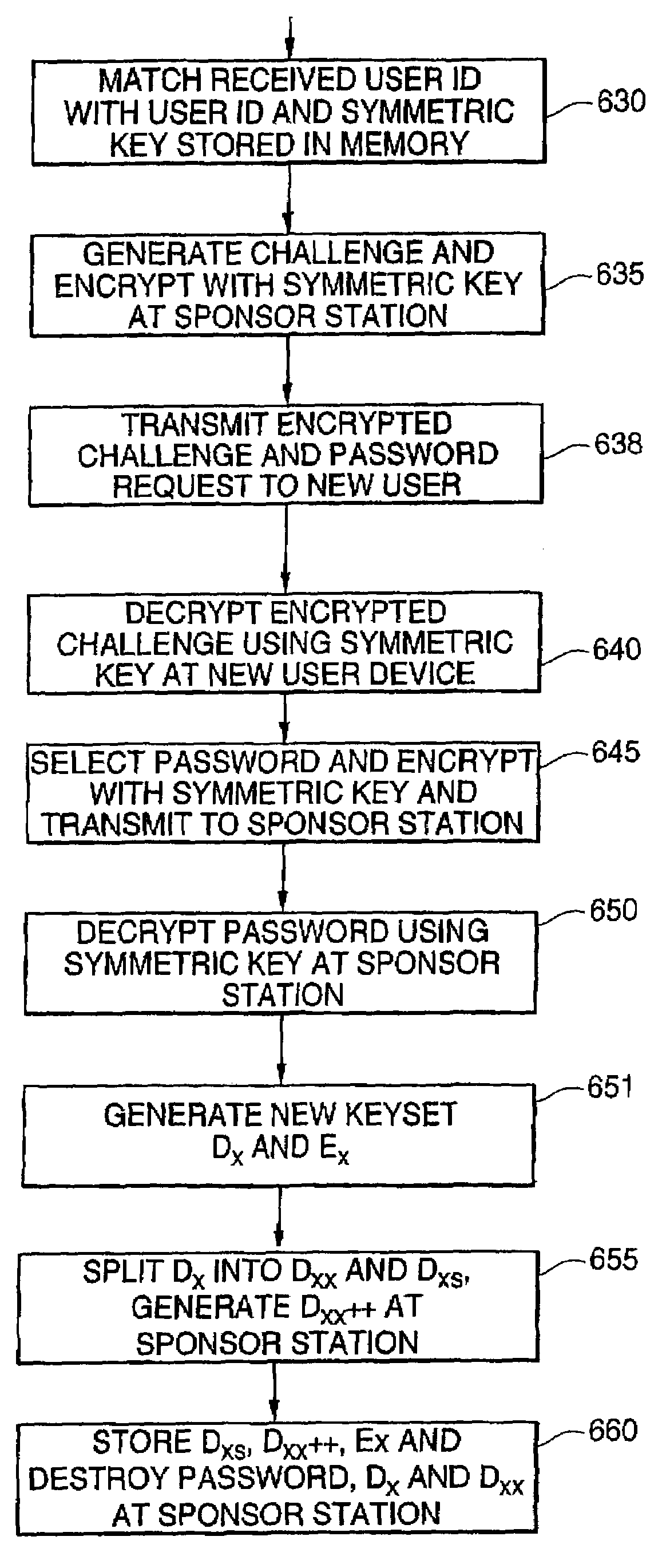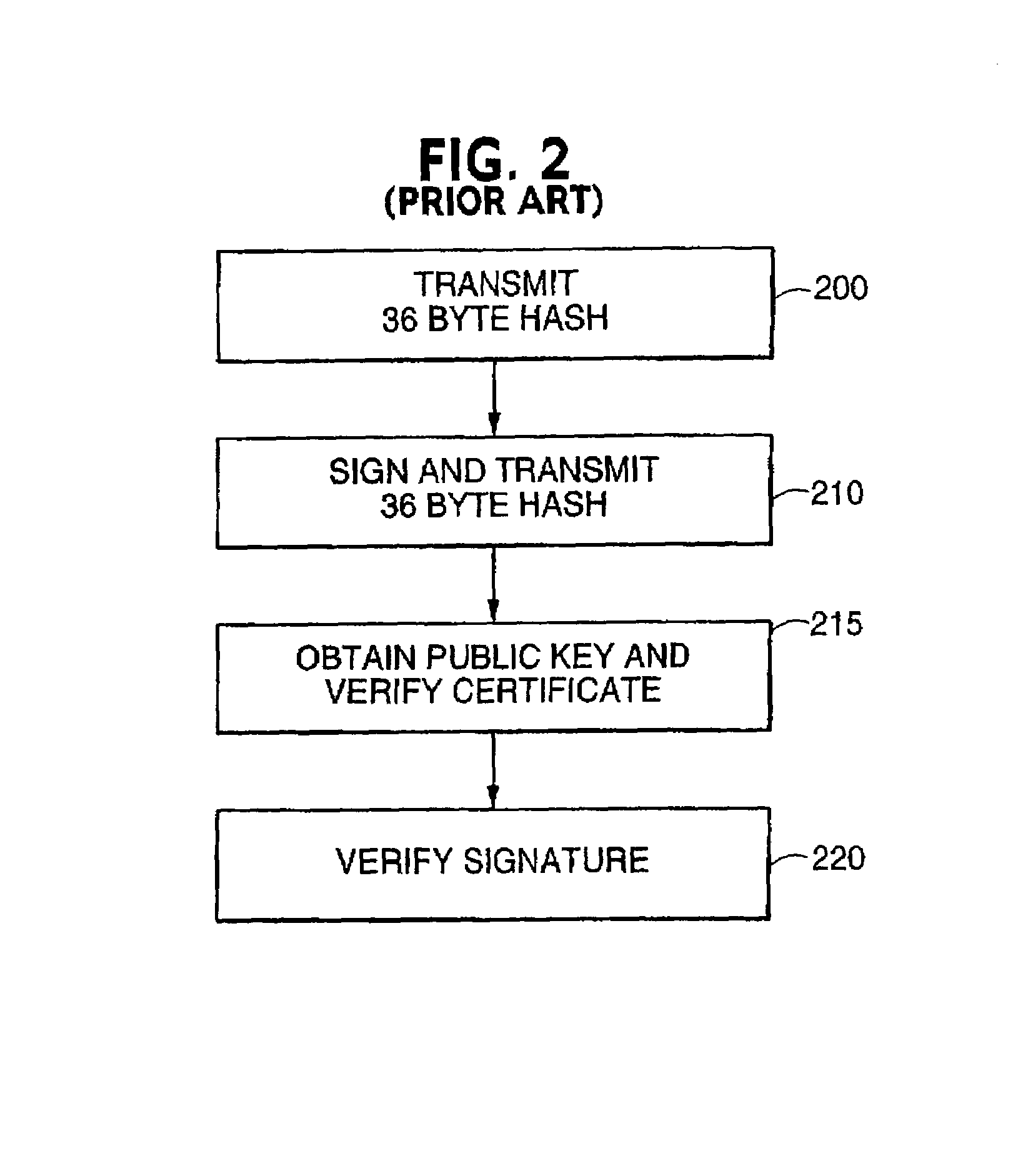System and method for crypto-key generation and use in cryptosystem
a crypto-key and crypto-system technology, applied in the field of crypto-systems, can solve the problems of eve being able to potentially eavesdrop, eve being able to eavesdrop, and being able to reverse, and achieve the effect of increasing the level of security
- Summary
- Abstract
- Description
- Claims
- Application Information
AI Technical Summary
Benefits of technology
Problems solved by technology
Method used
Image
Examples
Embodiment Construction
[0066]FIG. 3 illustrates a network 10, which could be the Internet. As shown, the network 10 is an interconnection of networked devices in communication with each other. These networked devices include networked devices 30–33 associated with individual network users, networked device 40–41 associated with a merchant network user, a sponsor station 50 associated with a sponsor, and networked devices 60–62 associated with entities known to and trusted by the sponsor.
[0067]Networked devices 30–33 will be referred to as user devices. These network devices are typically personal computers. Networked devices 40–41 will be referred to as merchant servers. Networked devices 60–62 will be referred to as distinguished servers. It will be understood that a network may consist of more networked devices than depicted in FIG. 3.
[0068]FIGS. 9 and 10 depict an exemplary personal computer suitable for use by individual users to access the network 10 in the below-described invention. The computer is ...
PUM
 Login to View More
Login to View More Abstract
Description
Claims
Application Information
 Login to View More
Login to View More - R&D
- Intellectual Property
- Life Sciences
- Materials
- Tech Scout
- Unparalleled Data Quality
- Higher Quality Content
- 60% Fewer Hallucinations
Browse by: Latest US Patents, China's latest patents, Technical Efficacy Thesaurus, Application Domain, Technology Topic, Popular Technical Reports.
© 2025 PatSnap. All rights reserved.Legal|Privacy policy|Modern Slavery Act Transparency Statement|Sitemap|About US| Contact US: help@patsnap.com



